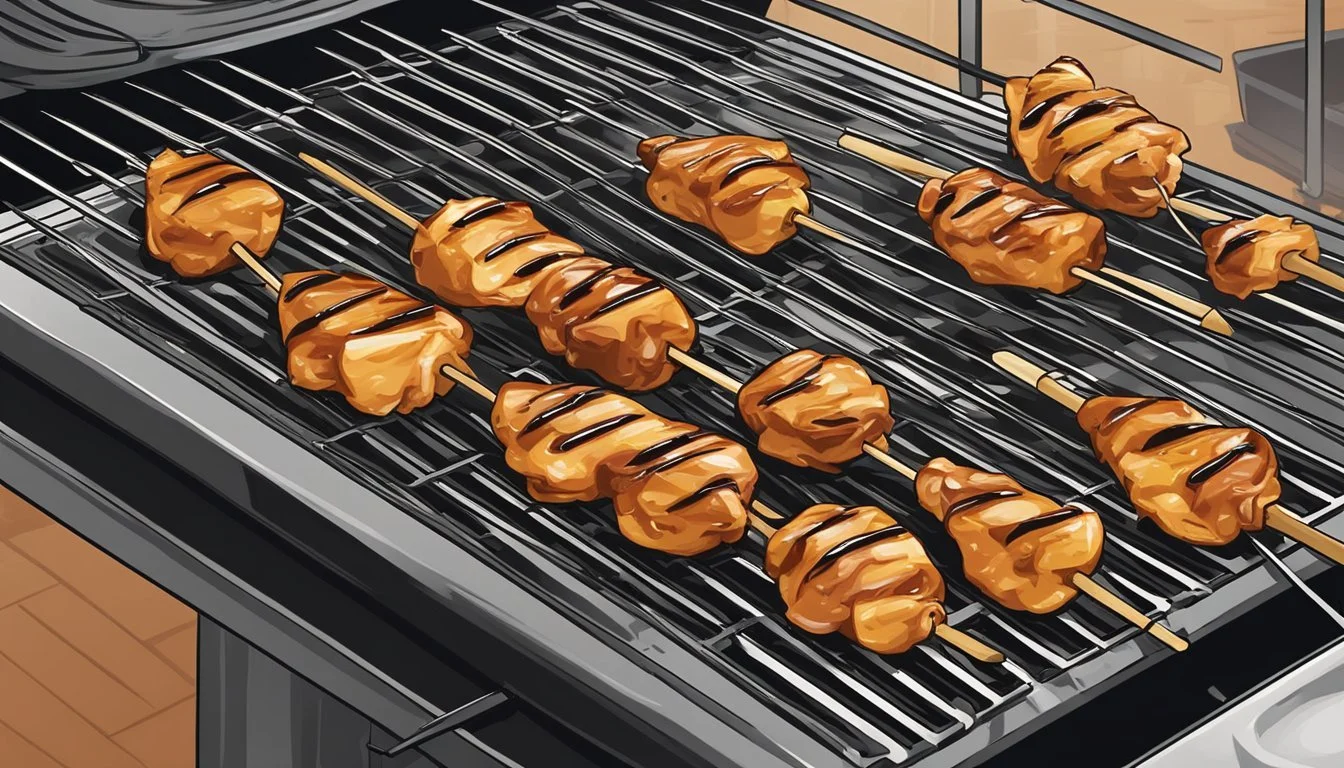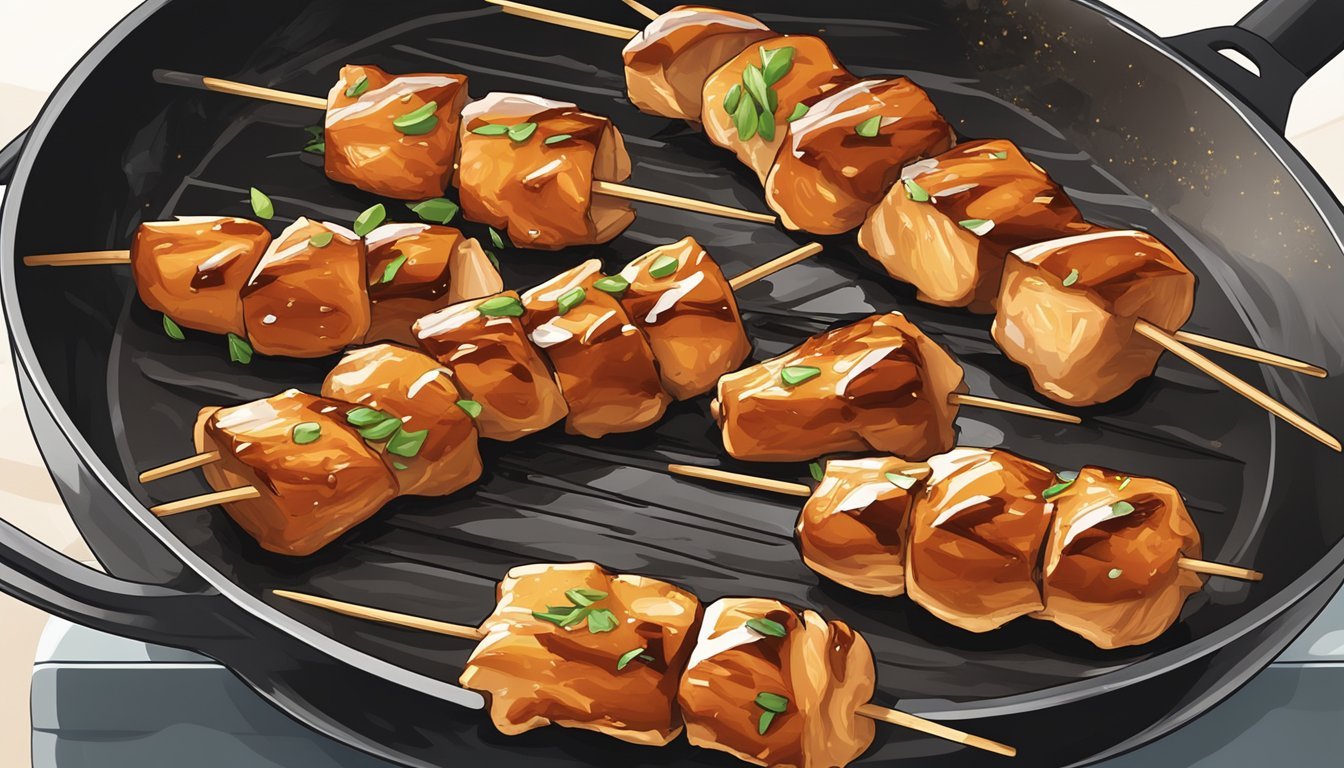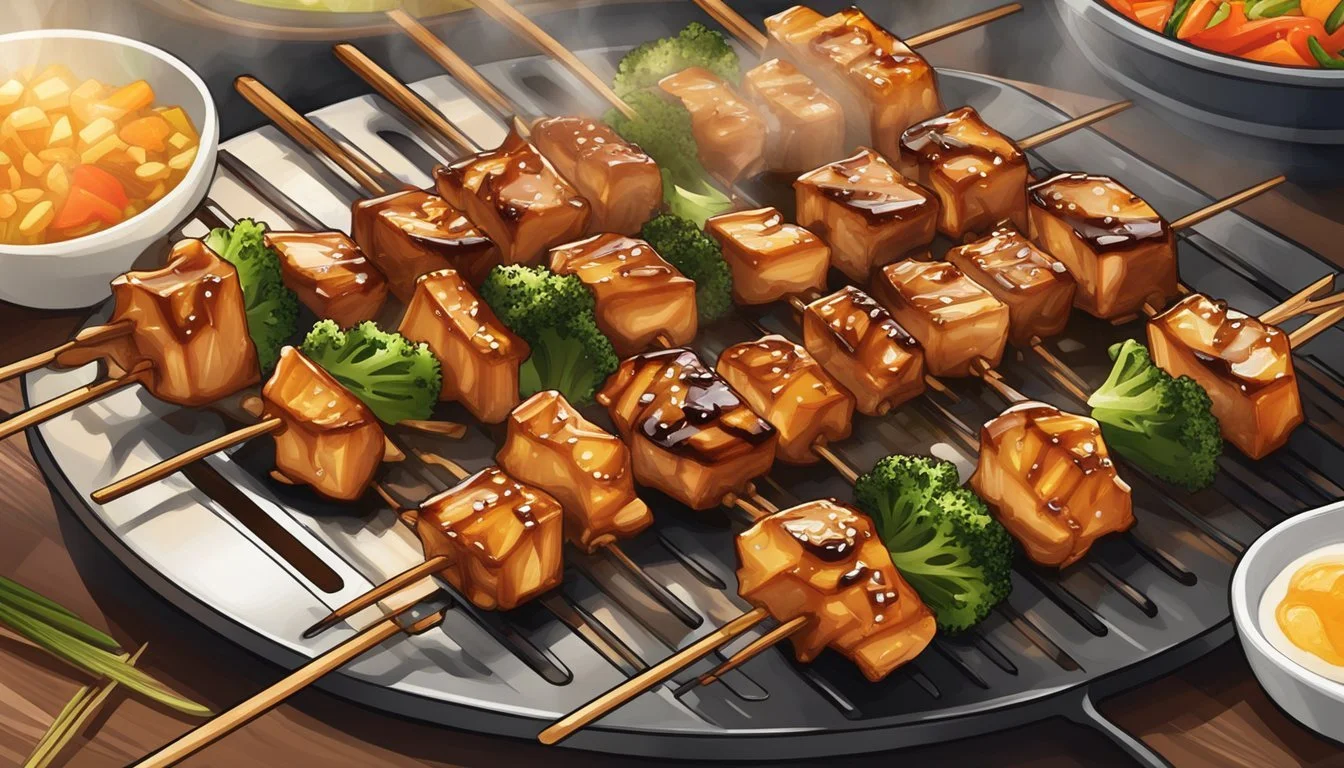Best Way to Reheat a Teriyaki Chicken Skewer
Ensuring a Perfectly Sticky Glaze
Reheating a teriyaki chicken skewer to retain its delicious sticky glaze requires a careful approach. The succulent flavor of teriyaki chicken skewers is best preserved when the glaze remains sticky and the chicken moist. The key to achieving this is to apply gentle heat that warms the chicken evenly without causing the sugars in the glaze to harden or the meat to dry out.
In the world of leftovers, teriyaki chicken skewers pose a particular challenge because of their unique coating and preparation method. It's not just about heating the meat; it's about reviving the skewer's original texture and taste. Whether using an oven, microwave, or skillet, the goal is to bring the skewer back to life as if it's fresh off the grill, all while maintaining that signature stickiness that makes teriyaki so appealing.
Understanding Teriyaki Chicken Skewers
In exploring the appeal of teriyaki chicken skewers, one must consider the intricate balance of flavors, the choice of chicken parts, and their nutritional profile. This section will demystify the elements that make these skewers a savory delight.
The Basics of Chicken Teriyaki
Chicken teriyaki is a popular Japanese dish known for its combination of sweet and savory flavors, primarily stemming from teriyaki sauce. This sauce is traditionally made from a mixture of soy sauce, sugar, and often includes garlic and ginger to deepen the umami taste. Chicken teriyaki can be prepared using different cuts of chicken, but boneless, skinless chicken thighs (What wine goes well with chicken thighs?) are frequently preferred over chicken breasts due to their richer flavor and tenderness. For skewers, the chicken is cut into pieces and threaded onto sticks before being cooked.
The Role of Marinade and Glaze
The marinating process is crucial, as it allows the teriyaki sauce to penetrate the chicken, infusing it with flavor and tenderizing the meat. Ingredients like fresh ginger, minced garlic, and green onion enhance the marinade's complexity. Post-grilling, a teriyaki glaze may be applied. This glaze often contains a reduction of the same ingredients with possible additions like brown sugar, which helps create a sticky, caramelized exterior when heated.
Health Benefits and Nutrition
Nutritionally, teriyaki chicken skewers offer a range of benefits. They are a good source of protein and contain varying amounts of unsaturated fat. Using boneless skinless chicken thighs ensures a moderate amount of saturated fat, trans fat, and cholesterol, balanced by the presence of fiber from garnishes like sesame seeds. The calorie count can vary but is typically impacted by the sugar content in the teriyaki sauce. Adjustments to traditional recipes, such as reducing sugar or utilizing garlic powder instead of minced garlic, can alter the nutritional scope for health-conscious diners.
Preparation for Reheating
To ensure that teriyaki chicken skewers are reheated to perfection, one must pay attention to the method of storage and the selection of an appropriate reheating technique. This will maintain the glaze's stickiness and the meat's tenderness.
Proper Storage Techniques
Before reheating, proper storage is critical. One should store the teriyaki chicken skewers in the refrigerator within two hours of cooking. They can be kept in an airtight container or tightly wrapped in cling film. For extended storage, place the skewers in a freezer-safe container and store them in the freezer. Before reheating, they should be thawed overnight in the refrigerator.
To maintain the quality and safety of the chicken, ensure it's stored at an internal temperature of 40°F (4°C) or below in the refrigerator and 0°F (-18°C) or below in the freezer.
Selecting The Reheating Method
When it comes to reheating, choosing the right method is essential. Instructions for each method vary:
Oven: Preheat to 350°F (175°C). Cover the chicken skewers with foil to prevent drying and reheat until the internal temperature reaches 165°F (74°C).
Microwave: Use a microwave-safe dish, cover the chicken, and heat on medium power checking at 30-second intervals for even heating.
Stovetop: Heat a skillet or saucepan with a bit of oil over medium heat. Place the skewers in and turn occasionally until heated thoroughly.
Grill: Heat the grill to a medium setting and reheat the skewers, rotating for even heating.
Air Fryer: If using an air fryer, preheat to 350°F (175°C) and heat the skewers for a few minutes, checking frequently.
Each method has its own merits, but all should aim for an internal temperature of at least 165°F (74°C) for food safety.
Best Practices for Reheating
Reheating teriyaki chicken skewers properly ensures that the glaze stays sticky and the chicken remains juicy. To achieve perfection, follow these best practices tailored to different reheating methods.
Reheating in the Oven
For those who prefer their leftovers to maintain a close resemblance to their freshly-grilled state, the oven is a reliable method. Preheat your oven to 350°F (175°C). Wrap the grilled teriyaki chicken skewers loosely in aluminum foil to prevent them from drying out. This also helps to keep the glaze on the skewers sticky. For those using bamboo skewers, it's advisable to soak them in water first to prevent burning. Place the skewers on a baking sheet and reheat for about 10-15 minutes. Check if they're thoroughly warmed before serving.
Utilizing the Stovetop
Reheating on the stovetop using a skillet can quickly bring back the freshness of your meal. Start by heating a non-stick skillet on medium heat. Add a small amount of oil or a splash of water to the pan to create steam, which will help keep the chicken moist. Place the teriyaki chicken skewers in the skillet, turning them occasionally for even heating. This should take about 5-7 minutes depending on the size of the skewers. The goal is to warm the skewers through without losing the glaze's stickiness.
Microwave Reheating Strategy
The microwave is the fastest method but requires care to avoid rubbery chicken. Place the chicken skewers on a microwave-safe plate and cover them with a damp paper towel to lock in moisture. Heat on high for 30-60 seconds, check for warmth, and if necessary, continue heating in 15-second bursts until the right temperature is reached. The paper towel helps keep the chicken moist and the glaze intact.
Alternative Reheating Techniques
For those looking for a crispy exterior and a hot interior, the air fryer can be an excellent tool. Preheat the air fryer to around 375°F (190°C). Arrange the skewers in the basket, ensuring they don't touch. Heat for 3-5 minutes or until the chicken is fully reheated. Always be cautious not to burn the glaze as air fryers cook with intense, direct heat. If you're reheating rice or other side dishes, you could sprinkle a bit of water before reheating to keep it moist.
Maintaining The Glaze and Moisture
To ensure that reheated teriyaki chicken skewers retain their signature sticky glaze and internal juiciness, one must manage the teriyaki sauce's consistency and the chicken's internal moisture. These elements are fundamental to the dish's appeal.
Preserving the Stickiness of the Glaze
Ingredients: The key to a sticky glaze is a balanced teriyaki sauce, typically containing sodium, sugar, and cornstarch which thickens the sauce.
Method: During reheating, the glaze should be simmered until it reaches a syrup-like consistency. When the sauce is just thickened, one can brush the glaze onto the skewers, which ensures the stickiness remains prominent.
Reapplication: After reheating the chicken, they should dip or brush it with a fresh coat of teriyaki glaze to replenish any moisture and flavor lost during the heating process.
Keeping Chicken Juicy and Flavorful
Searing: A quick sear in a pan with a small amount of sesame oil can lock in juiciness and impart a flavorful crust complementary to the teriyaki sauce.
Heat Management: Chicken should be reheated gently to avoid drying out. A moderate microwave setting or a covered pan on low heat can assist in maintaining moisture.
Vegetables and Garnishes: Adding vegetables to the skewers when reheating can contribute moisture and a vibrant flavor profile. Garnishing with sesame seeds and green onions after reheating can enhance both taste and texture, while a drizzle of honey can boost flavorful juiciness and stickiness.
Accompaniments and Side Dishes
When reheating a teriyaki chicken skewer to maintain its sticky glaze, choosing the right accompaniments and side dishes enhances the overall dining experience. Expertly selected sides can complement the sweet and savory flavors of teriyaki while also introducing additional textures and taste profiles.
Suitable Sides to Enhance the Meal
Rice: Steamed white rice or coconut lime cauliflower rice provides a subtle backdrop that allows the teriyaki flavor to stand out.
Tip: Sprinkle sesame seeds and finely chopped green onion on top to add a crunch and a pop of color.
Vegetables:
Steamed or grilled vegetables (What wine goes well with grilled vegetables?) such as bok choy, broccoli, or asparagus pairs well with the teriyaki chicken skewers.
Stir-fried mixed vegetables lightly seasoned can complement the glaze without competing for the spotlight.
Creative Serving Options
Salads: Offer a light, refreshing counterpoint with crisp greens or a zesty cucumber salad. The coolness of the salad contrasts nicely with warm, glazed teriyaki chicken.
Dressing: Use a tangy ginger or miso-based dressing for theme consistency.
Side Dishes:
Experiment with grilled corn sprinkled with chili powder for a smoky addition.
Pair with teriyaki noodles tossed with thinly sliced bell peppers and carrots for an easy, flavorful side.
Final Tips and Common Mistakes
Reheating teriyaki chicken skewers requires maintaining the sticky glaze while ensuring the meat reaches the ideal internal temperature. Precision and care are key to achieving this.
Ensuring Even Cooking and Heating
Internal Temperature: Always use a meat thermometer to check that your chicken has reached an internal temperature of 165°F (74°C) for food safety.
Even Cooking: Dice the chicken into smaller pieces if necessary to promote uniform heating and consider flipping the skewers occasionally to ensure every part gets evenly warm.
Avoiding Common Reheating Errors
Marinade: To keep the glaze sticky, avoid adding extra marinade before reheating as it can become too liquid. Instead, brush on a little additional glaze afterward if needed.
Avoid Overheating: Do not microwave for too long as it can dry out the chicken and make the glaze tough. Heat in short intervals, check frequently.
Storing: Store skewers in a single layer, if possible, to avoid the pieces sticking together, which ensures easier and more consistent reheating.
By following these specific tips and avoiding common errors, one can reheat teriyaki chicken skewers easily and bring them back to near-perfection.




